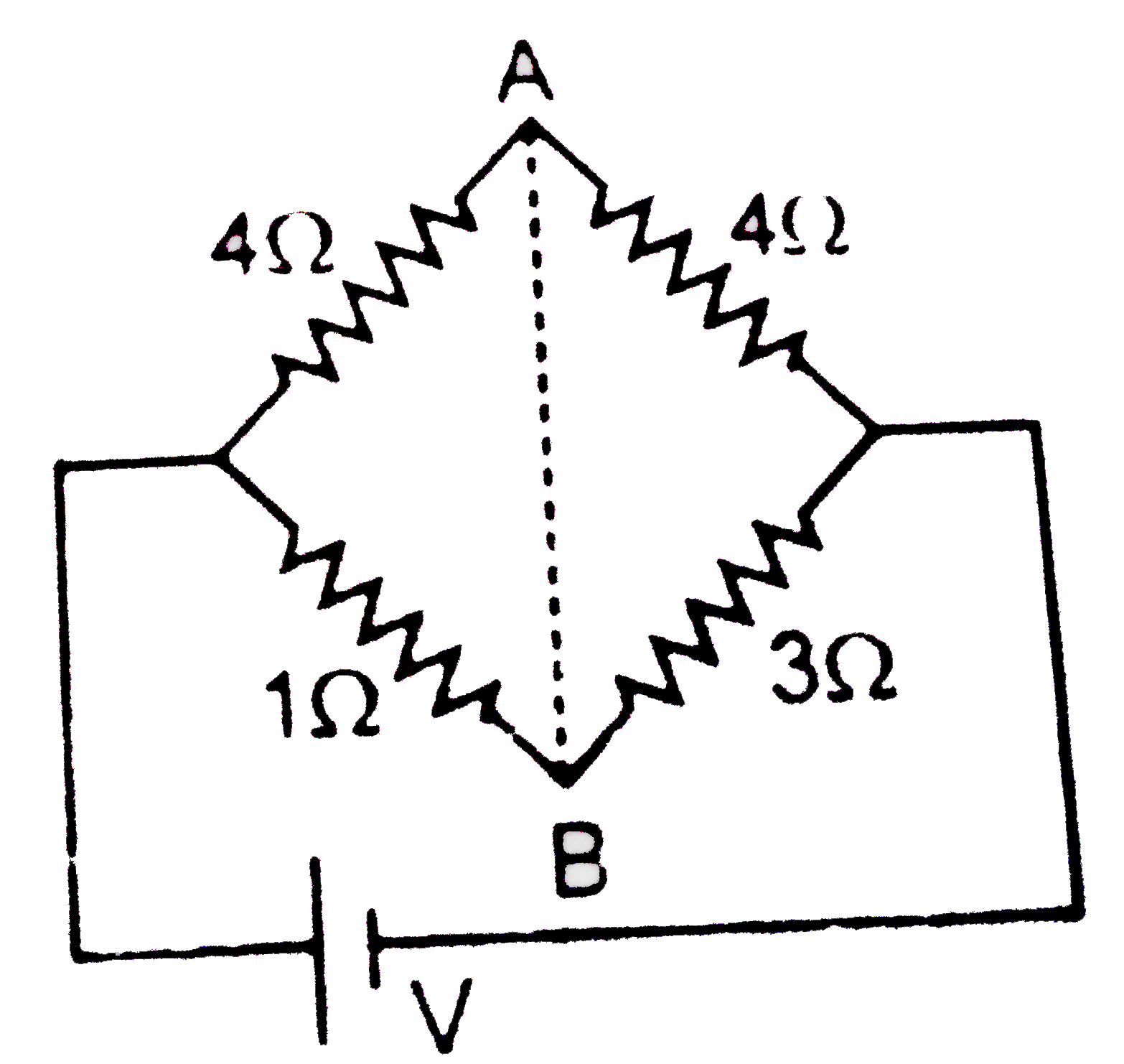Resistivity of a conducting wire :
varies with its length
varies with mass
varies with is cross-section
is independent of its demensions.
The correct Answer is:D
To solve the question regarding the resistivity of a conducting wire, we need to analyze the relationship between resistivity and the dimensions of the wire.
1. Understanding Resistivity:
Resistivity (ρ) is a property of the material that indicates how strongly it resists the flow of electric current. It is defined as the resistance of a unit length of the material with a unit cross-sectional area.
2. Resistance Formula:
The resistance (R) of a wire can be expressed using the formula:
R=ρLA
where:
- R is the resistance,
- ρ is the resistivity,
- L is the length of the wire,
- A is the cross-sectional area of the wire.
3. Rearranging the Formula:
From the resistance formula, we can rearrange it to express resistivity:
ρ=R⋅AL
This shows that resistivity is calculated based on resistance, area, and length.
4. Analyzing Dependence:
At first glance, it may seem that resistivity depends on both the area (A) and length (L) of the wire. However, resistivity is a material property and does not change with the dimensions of the wire.
5. Conclusion:
Since resistivity is a characteristic of the material itself and is independent of the wire's length and cross-sectional area, we can conclude that:
- Resistivity is independent of its dimensions.
6. Final Answer:
Therefore, the correct option is D: is independent of its dimension.
Resistivity (ρ) is a property of the material that indicates how strongly it resists the flow of electric current. It is defined as the resistance of a unit length of the material with a unit cross-sectional area.
The resistance (R) of a wire can be expressed using the formula:
R=ρLA
where:
- R is the resistance,
- ρ is the resistivity,
- L is the length of the wire,
- A is the cross-sectional area of the wire.
From the resistance formula, we can rearrange it to express resistivity:
ρ=R⋅AL
This shows that resistivity is calculated based on resistance, area, and length.
At first glance, it may seem that resistivity depends on both the area (A) and length (L) of the wire. However, resistivity is a material property and does not change with the dimensions of the wire.
Since resistivity is a characteristic of the material itself and is independent of the wire's length and cross-sectional area, we can conclude that:
- Resistivity is independent of its dimensions.
Therefore, the correct option is D: is independent of its dimension.
Topper's Solved these Questions
- MODEL TEST PAPER (SOLVED)BOOK - MBD -HARYANA BOARDCHAPTER - MODEL TEST PAPER (SOLVED)EXERCISE - VERY SHORT ANSWER TYPE QUESTIONS
10 Videos
- MODEL TEST PAPER (SOLVED)BOOK - MBD -HARYANA BOARDCHAPTER - MODEL TEST PAPER (SOLVED)EXERCISE - SHORT ANSWER TYPE QUESTIONS
7 Videos
- MAGNETISMBOOK - MBD -HARYANA BOARDCHAPTER - MAGNETISMEXERCISE - OBJECTIVE TYPE QUESTIONS
17 Videos
- MODEL TEST PAPER - 2BOOK - MBD -HARYANA BOARDCHAPTER - MODEL TEST PAPER - 2EXERCISE - SET - D ( LONG ANSWER TYPE QUESTIONS)
4 Videos
Similar Questions
Knowledge Check
The specific resistance of a conducting wire depends upon
Alength of the wire, area of cross-section of the wire and material of the wireBlength of the wire and area of cross-section of the wire but not on thematerial of the wireCmaterial of the wire only but neither on the length of the wire nor on the area of cross-section of the wireDlength of the wire only but neither on the area of cross-section of the wire nor on the material of the wireShown a circuit with known resistance R,R1 and R2 neglect the resistance of the conducting wires and internal resistance of current source The magnitude of electrotive force E1 each that the currect l through the resistance R in zero will be
 AE(R2R1)BE(R1R2)CE(R1+R2R2)DE(R1R1+R2)
AE(R2R1)BE(R1R2)CE(R1+R2R2)DE(R1R1+R2)Resistivity of a material of wire is 3⋅10−6Ω−m and resistance of a particular thickness and length of wire is 2Ω. If the diameter of the wire gets doubled then the resistivity will be
A1.1⋅10−2Ω−mB1.5⋅10−3Ω−mC2⋅10−6Ω−mD3⋅10−6Ω−m
The resistance of a conductivity wire of length 1.1 m and of diameter 0.14 mm is 30Ω. Calculate its resistivity.
View SolutionWhat is electrical resistivity of a material? What is its unit? Describe an experiment to study the factors on which the resistance of conducting wire depends.
View SolutionThe electrical resistance of a 5 m long wire is 3Ω Calculate the electrical resistivity and conductivity of material if its cross section is 0.03mm2 .
View SolutionIn the circuit shown if a conducting wire is connected between points A and B, the current in this wire will :-

View SolutionAssertion (A): Bending of a conducting wire effects electrical resistance.
Reason( R): Resistance of a wire depends on resistivity of that material.
View Solution
